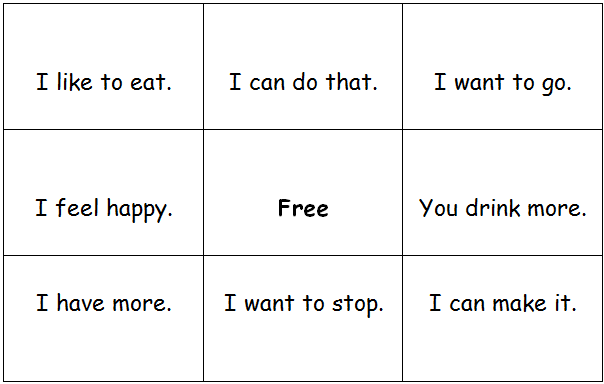
By Jane Odom, M.Ed, Director of Implementation Resources
Are you looking for a way to introduce vocabulary that is more than just drill and practice? Using a simple game like Tic Tac Talk is not only fun and motivating, it is also easy to set up on the fly. Tic Tac Talk can also be scaffolded to accommodate the skills of all levels of communicators. Here is a sample board set up to teach core verbs.
Tic Tac Talk
Simply ask the device user to find the words on their device and fill in the space with an ‘X’ or an ‘O’. The therapist or another child can also use the device to play against them. The first one to get three in a row, wins.
The boards can be made in a variety of ways so different objectives can be introduced. Here is a sample board for a student working on simple sentences. This time the device user is required to create an entire sentence using their talker.
 Text Version
Text Version
One last option is to fill the boxes with open ended questions. This can also be a fun way for the student to explore where vocabulary is on their device.
 Text Version
Text Version
You must be logged in to post.
Making AAC Work










